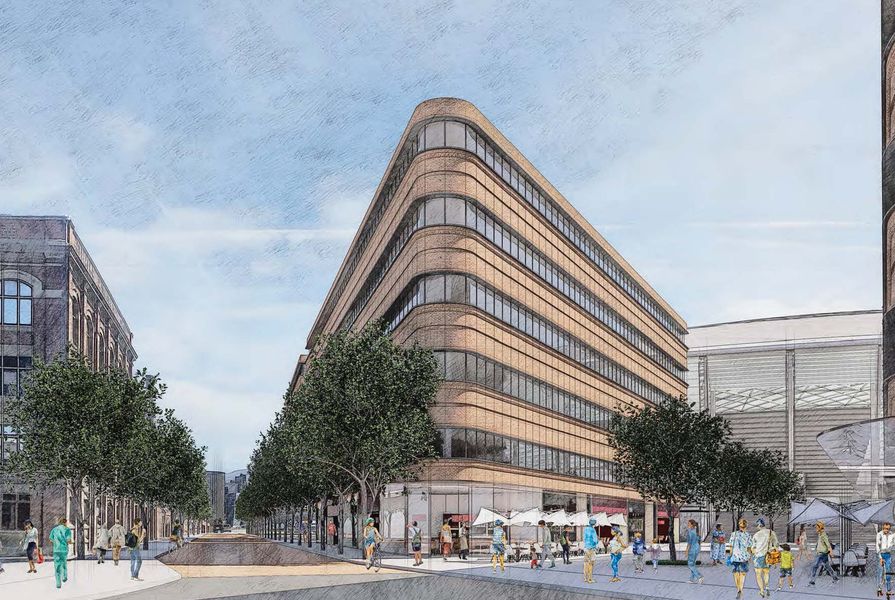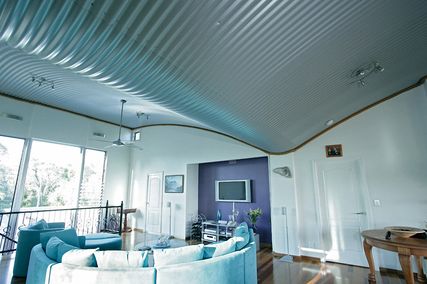A draft precinct plan for the redevelopment of Hobart’s heritage-laden Macquarie Point has been released by the Tasmanian government, following a review of more than 2,000 written submissions regarding the development.
Macquarie Point is located between Hobart’s CBD and the Port of Hobart. It connects the CBD to the Queen’s Domain, the Hobart Cenotaph, the intercity cycleway and Tasman Bridge. The site was home to the muwinina people for thousands of years before becoming an early arrival point for Europeans and later being used as a farm, abattoir, lumber yard, gas works, cold store, goods storage and military drill yard.
The state government has proposed the establishment of a multi-purpose stadium, a First Nations culturally informed zone, Antarctic facilities, an integrated mixed-use zone, residential zone and public foreshore on the site. The draft precinct plan has been produced by the Macquarie Point Development Corporation with Cox Architecture.
As indicated in the plans, the objective for the new mixed-use precinct is to create a place for community and visitors to “gather, celebrate and reflect, through the arts, culture, sport, events and entertainment.”
A multipurpose stadium would create the opportunity to attract and host events at a scale currently not available in the state, with the stadium footprint, excluding external concourse, occupying an approximate area of 43,000 square metres.
An Aboriginal Culturally Informed Zone has been proposed for the northern and western (front) face of the site due to its increased visibility. The design team will seek guidance from First Nations enterprises when naming the space, identifying the purpose of the space and exploring opportunities for integrating narrative, storytelling and educational aspects.
An Antarctic Facilities Zone, of 8,000 square metres to the north-east of the stadium, has been proposed to support growth within the Antarctic industry. The zone would offer administrative office spaces and underground carpark to organizations, with priority given to those with projects in the Antarctic.
The Mixed-Use Zone (south-west) would serve as an interface between Macquarie Point, the Macquarie Wharf Commercial Zone, and Sullivans Cove, offering a range of commercial, retail and food and beverage spaces.
A residential and foreshore zone would provide affordable housing to support healthcare workers, as well as apartments for release to the general market. The proposal states the residential develpment would be “sympathetic to the stepped topography of the foreshore and will be delivered with an activated ground floor of commercial, retail or food and beverage uses.” The zone will have pedestrian walkways connected to the main activity hub, and will provide access to communal open spaces, public transport options and the publicly accessible foreshore.
The Royal Engineers Building, established in 1847, will remain on site. So too, will the Macquarie Wharf and Huon Quays, with both have upgrade works undertaken.
Stage one of the project will involve upgrades to the Macquarie Wharf, northern access road works and commencement of events stadium, while stage two of the project will involve the development of the residential zone, public foreshore, Aboriginal Culturally Informed Zone and Commercial Port Zone. The Mixed-Use Zone, Antarctic Facilities Zone and Huon Quays stage of works will be undertaken in the final stage of the project.
Plans state the precinct has been designed to be complementary rather than competitive with neighbouring sites, as well as improve connections and access to nearby sites and parks, extend Hobart’s urban character, celebrate and preserve heritage, maintain significant views across the cove and explores opportunities to integrate the waterfront through the allocation of public spaces along the water’s edge.
During the consultation phase, more than 2,000 submissions were received, with the multipurpose stadium garnering mixed responses. While there was “predominately strong support,” there were “also strong views that do not support the development of a stadium on site.” Concerns were largely centred around the size of the venue or a preference for an alternative facility on site. Plans indicated that majority of submissions were in favour of the new venue bringing visitors during off-peak travel seasons, however, many outlined a desire for a sensory-informed space that is considerate of all aspects of mobility and accessiblity.
The project will target a Green Star rating through the implementation of sustainability design measures that will maximize energy efficiency and reduce carbon emissions.
The draft precinct plan is now on exhibit for feedback. The design team and stakeholders are currently working on the masterplan, which will provide more details on each of the zones and the specific uses of each zone.
















